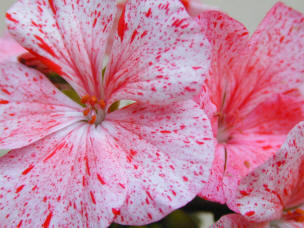Winter savory Herb | Satureja montana
Satureja montana - The Winter Savoury - has a few variations of types - making it an interesting group of plants for the herb garden and for herbal cooking and medicine. All are suited to normal herbal use.
The Winter Savoury - as its name suggests - is an evergreen perennial, with dark green or greyish green leaves - which are small and held tightly to the main stems. The flowers are mauve pink, and very similar to miniature mint and sage flowers. It is yet another member of the labiate family - Labiatae, with the flower type and square stems being distinguishing features.
It is yet another herb that is happiest if grown in a 'normal' soil - neither damp or arid. Rarely in need of water, other than the driest, hottest of summers, and happy to take care of itself with no major pest or disease problems.
The basic Winter Savoury grows to around 14in (35cm) and is clump forming - rarely getting more than 12in (30cm) across - if that! Its growth is generally upright, so suited to planting for contrast amongst low growing Thymes and the like.
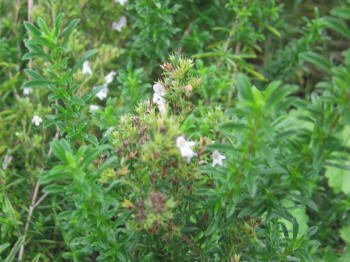 Satureja montana Repens or S. m. Repanda are lower
growing - with 'repens' being positively floppy in habit.
Satureja montana Repens or S. m. Repanda are lower
growing - with 'repens' being positively floppy in habit.
Propagation of Winter Savoury
Winter Savoury can be grown from seed - sown either late winter or early spring, and planted out after growing on a little before hot weather starts - optimist as ever! Full sun - or maybe slightly dappled shade are the main requirement after a dry spot. Suited to growing in a container herb garden - especially the basic upright growing Satureja montana.
Cuttings - semi ripe - in late summer are also an option, and these can be placed in pots in greenhouse or cold frame and over-wintered before rooting and planting out in the spring.
For general garden use - particularly for the organic gardener - it is sometimes used in companion planting near beans - inter-row - when it can keep the bean weevil away. The rose gardener also benefits, for it is often used to repel greenfly and other aphids - Again a member of the Labiate family which seem to have these beneficial effects for the gardener.
Herbal Medicine Uses
Winter Savoury - as well as being a useful winter culinary herb - has many herbal uses attributed to it, including that of being a good antiseptic. It is also used in herbal medicine as an aid to expel unwanted air - or gas - from the intestinal area! Its antiseptic uses are of benefit with bee stings, and is also supposed to stop itching as a result of mosquito and other nasty insect bites.
For herbal uses, it can either be used fresh or from the dried leaves which are harvested late summer and dried in the normal herbal manner.
Oil of Winter Savoury is used as a control against such fungi as Candida albicans - it should not be used by pregnant women.
Its summer counterpart - Summer Savory is used as an aphrodisiac. This property is not the same with the winter savoury!
Culinary Uses of Winter Savory
Its main claim to fame being that it is available as a fresh her to the winter chef. Meats - and in particular the white meats are improved, though only if not cooked to extinction!
As a salad addition, it has rather a strong - but not unpleasant taste, but this is reduced considerably upon cooking.
Best Selling Gardening Products
Popular Gardening Sections
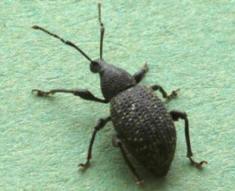
Problems
Identify Weeds in The Garden - How to deal with weeds. Diseases and Pest which harm your garden and plants, learn how to prevent, deter and erradicate your garden problems.
Garden Problems
Pruning
Pruning Guide. Shrubs flower better with correct pruning. Many illustrations and examples of what to do - and when. Includes evergreens, roses, flowering shrubs, spring flowering shrubs and pruning for stem effect. This is our most viewed and comprehensive section,
Pruning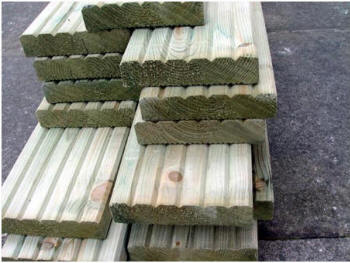
Gardening Businesses
Gardening Businesses listed in the UK counties and USA states. County and State Listings of businesses involved in Garden supplies and services. If you wish to be added to the Directory, please send us your information. Having problems, use the search box
Businesses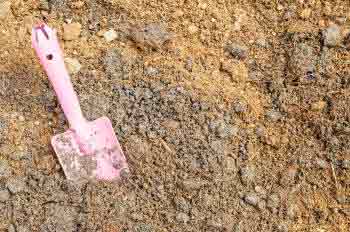
Gardening
In this section you will learn about Gardening Basics, Containers, Landscaping, Propagation and Soil.
Gardening
Gardening Gifts
Gardening Gifts and Reviews, Read Before you Buy
- Gardening Gifts Ideas
- Gifts For Her
- Gifts For Men
- Power Tool Gifts
- Cheap Gifts
- Personalised Gifts
- Wildlife Gifts
- Family Gifts


